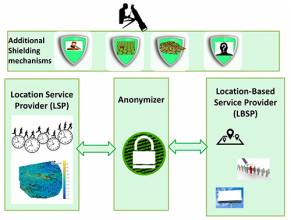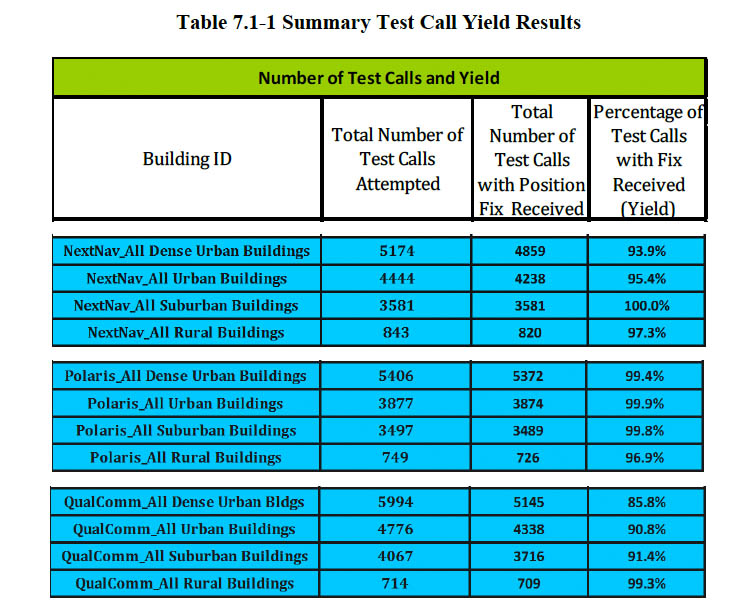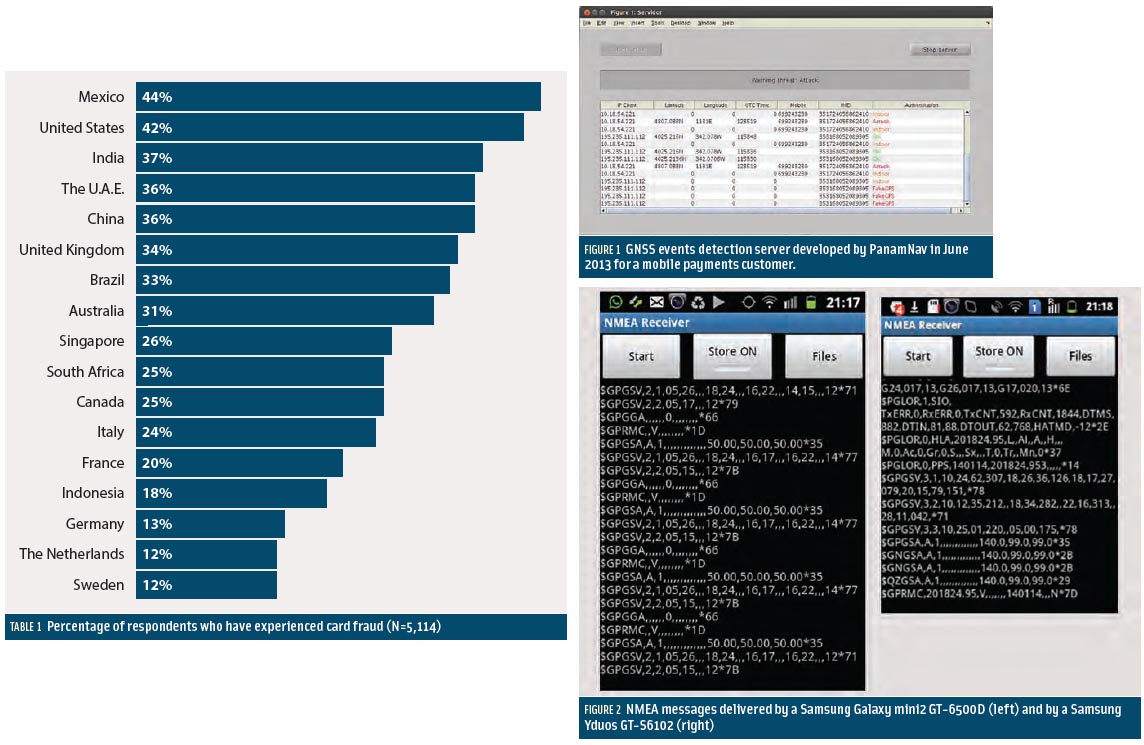In a part of the world where frustrated drivers will park anywhere, including squarely on a sidewalk, a local newspaper is using location data to shame car owners into shaping up.
The Village, a Russian online publication serving Moscow, St. Petersburg and Kiev; created a free app that notes a badly parked vehicle’s make, color, and license plate information when users snap its picture.
In a part of the world where frustrated drivers will park anywhere, including squarely on a sidewalk, a local newspaper is using location data to shame car owners into shaping up.
The Village, a Russian online publication serving Moscow, St. Petersburg and Kiev; created a free app that notes a badly parked vehicle’s make, color, and license plate information when users snap its picture.
The information and photo are broadcast as a pop-up ad that appears on the screens of computers in the area immediately around where the car is parked — exposing the offender’s behavior to co-workers, family, and friends.
In a particularly diabolical twist, Village readers are forced to forward the screen-blocking pop-up ad via a social network like Facebook to be able to resume reading.
The app is able to target the zone around miscreant drivers, in part, because computers’ IP addresses indicate their location and many cameras and smart phones imbed location data in the photos they take.
Although Russian pedestrians might be thrilled to deliver a little payback, not everyone is so sanguine. Increasing awareness of the ways location data is being used, and worries over personal privacy, have led consumers to regularly opt out of sharing location information and triggered protests when tracking is discovered.
Recent revelations that the National Security Agency (NSA) has approval from the secret Foreign Intelligence Surveillance Court to broadly gather and store location information likely have made matters worse, even though NSA has issued assurances that it is not actually doing so.
That public aversion to location surveillance could be bad news for the rapidly growing cadre of commercial firms that collect, sell, analyze, and use location data — 70 percent to 80 percent of which is derived from GPS technology.
Asif Khan, founder and president of the Location Based Marketing Association (LBMA) in Toronto, said he sees some 30 to 40 new location-based service (LBS) apps every week. The LBS market is growing exponentially, he suggested, although estimates are hard to come by because so many widely varying applications are springing up. (See the sidebar, “Potholes and Poker” at the end of this article).
The largest segment of the industry is location-based advertising, Khan told Inside GNSS, where some $1.2 billion in ads will be bought this year — a figure he expects to grow to $6 billion by 2015.
Unquestionably, more and more companies are jumping into the location data game. AT&T recently changed its privacy policy to allow it to sell “anonymized” location data about its subscribers. Verizon already sells such information. Google recently spent $1 billion to buy the Israeli company Waze, a social network provider whose members provide traffic and road condition updates to other members — information that could potentially be added to Google maps.
Other uses for such data exist as well. Khan told attendees at the Future Space 2013 conference in Washington that Google has plans to provide the data for traffic control. The information could help localities ease congestion without a huge investment in infrastructure.
Business-Oriented Apps Growing
In the retail sector consumer tracking is being used to identify the best store sites and offer promotions to customers. One of the most widely touted ideas is to send coupons to the mobile phones of potential customers already in the store’s immediate area. Those customers might be identified by the fact that they just used a review site to search for a restaurant or have an app on their phone that identifies them as being a frequent buyer.
One business in Guatemala has taken targeted discounts to a new level. Called Meat Pack, the store sells cutting-edge athletic shoes – the kind of limited edition footwear that collectors, or sneakerheads, scramble to buy. The store’s fans follow it via social networking and many have downloaded Meat Pack’s app. The store developed Hijack, an app enhancement that is triggered when one of the store’s customers enters a competing shop.
When a Meat Pack customer steps into the official store of one the brands sold by Meat Pack, Nike for example, the Hijack application offers them a 99 percent discount. That discount diminishes one percentage point per second until the customer enters Meat Pack, which is located in the same mall. One buyer got there so fast he got 89 percent off. Some 600 customers have used the Meat Pack discount — sales that were made public on Facebook, generating even more buzz.
Not all retailers have been as successful. Nordstrom began experimenting with location tracking last year but, once it began notifying shoppers, they complained and the retailer had to drop the project. The program used sensors installed by a firm called Euclid that captured the WiFi signals coming off customer cell phones.
Euclid was able to monitor when someone bypassed the store, when they came in, where they went, and how long they stayed. Such data can help stores assess why they are winning/losing customers, evaluate promotions or determine whether a particular display can hold buyers’ attention
According to Euclid’s website they also offer information on consumer loyalty, which can be inferred from tracking the unique identifier number broadcast by every cell phone. Over time it can indicate who is a regular shopper — although the firm says the data is anonymized before it is delivered.
But data-hungry firms can do more than just follow customers around. Nomi, of New York, can link a customer’s visit and behavior with their Web browsing and purchase history. The person must have provided some personal information to create the link, according to a story in the New York Times. They might have downloaded the retailer’s app or used the in-store WiFi and given an e-mail address. Once the link is made the store will have access to their profile.
Some brick and mortar businesses see tracking apps as a way to level the playing field. It gives them some of the intimate insight into their customers that online-only stores like Amazon have been getting for years get by analyzing purchases.
But location information has uses far beyond getting to know who one’s best customers are.
“(Companies) have done studies which demonstrate that they can predict the behavior of people based on their mobile patterns,” said Natasha Léger, chief executive officer of the Location Forum, which just recently voluntary guidelines for the protection of location data.
The guidelines point out that location data can be derived from more than cell phones or IP addresses. Georeferences can be found on Facebook and in the metadata of digital photos, email, and documents. Companies are already gathering data from 100 or more sources and integrating it to gain new insights, Leger said. “Data is being correlated at a scale that most people don’t understand.”
Protecting Your Location Data
Part of what makes it possible to tie together such a vast array of records is the location data itself. In years past, records would be correlated using someone’s Social Security number — until identity theft and privacy concerns curbed the practice. Now location is becoming the uniting element that makes it possible to link the bits of someone’s life.
The act of pooling location data, however, can often break the protections that keep personal details private. Commercial firms may be able to determine religious and political beliefs and even map out someone’s circle of friends. Police and national security agencies may implement similar methods for different purposes.
Geofencing is a technique that can be used to determine the members of a social network.
One establishes a virtual perimeter around a particular point, then uses location data to note who enters the enclosed area. The perimeter, for example, might be around a concert venue — which enables music promoters to gain insight into ticket-buying fans. The perimeter does not, however, have to be centered on a fixed place. One can set a geofence around a person’s cell phone. Over time it would be possible to see who came into contact with that individual and discover who their acquaintances are
“With current location information,” said Leger, “you can you discern over time who somebody’s friends are.” Some companies are already doing this, she said.
Moreover, this is not the kind of analysis that has to be done in real time. If the data has been saved, a network map can be prepared retrospectively — and some companies save such information indefinitely, said Leger. Although the commercial value of such analysis is not yet clear, such details could be used to map out the connections between criminals or terrorists confirmed Leger.
That kind of in-depth analysis, however, is still relatively unusual, said Arthur Berrill, vice president of technology at DMTI Spatial and a contributor to the Location Forum’s privacy guidelines.
The biggest potential curb on the use of location data is not regulation, which so far has been lagging, but consumer reaction — especially when they feel their privacy is at risk. Only 26 to 28 percent of app buyers say ‘Yes,’ when asked if they want to share their location information, said Khan. A 2011 survey by the White Horse Digital Futures Group found that nearly a third of those who knew about location apps, but chose not to use them, cited privacy concerns.
“They sort of freak me out. I’m not sure that it’s good to always let others know my location,” said an Atlanta, Georgia, woman in her 20s told the surveyors.
The issue with privacy, said Khan, is that people do not understand the benefits of sharing their location.
“When you get an app on an iPhone, one of the first questions you get asked when you download that app is ‘Are you willing to share your location?’” he says. “And most people say ‘No.’ And the reason . . . is because that is not the question to ask. Because you haven’t first told people what they are going to get if they share their location.
What you should be saying is, ‘Thanks for downloading this app, by sharing your location you are going to get A, B and C. Now, would you like to share your location?’ You are going to get a lot more yeses if you take that approach than the approach they have today where they ask if you want to share your location without explaining why.”
It is not clear, however, that everyone understands the implications of agreeing to share their location.
“If you have a news app that asks you ‘Can I use your location data?’ and it’s a free app, more than likely people will say ‘Yes,’” explained Leger. “But if that same pop-up said ‘Can I use your financial information?’ You’d probably hesitate because you already have a preconceived notion of the sensitivity of that financial information. People do not have a preconceived notion of the sensitivity of location data.”
Laws Lagging Location Apps
Lawmakers in Washington have picked up on the issue of location privacy though little has been done since several measures were introduced for the new congressional session.
The GPS Act (HR 1312 and S. 639) and the Online Communications and Geolocation Protection Act (HR 983) would prohibit intercepting and disclosing location information without prior consent. Both of these bills are still in committee, and no action has been taken on them since March.
The Location Privacy Protection Act, which was introduced last year by Sen. Al Franken, D-Minnesota, would prohibit companies from collecting, obtaining or disclosing most location data without express permission. According to his staff, the senator is planning to reintroduce the bill in the coming months.
State lawmakers are not waiting — although they are primarily moving to mandate law enforcement officials get a warrant before accessing location data. Massachusetts is considering such a law and Maine has already passed one. Texas has passed a law requiring a warrant for emails, and a similar bill passed the California Senate. The metadata in the header of an email can include an IP address, which often indicates location.
The laws on location data are unclear, said Leger, and handling things poorly can put a firm’s reputation at risk. To keep the confidence of their customers, companies should adopt policies that protect their privacy even if they may go beyond current legal requirements, she said.
“I think for the future of location what is important is demonstrating respect for location data and privacy beyond what the current law asks for,” said Leger, “because the technology is moving much faster than the current legal and policy regime.”
Companies that step up to the challenge will not only avoid bad publicity but will be able to make a stronger case to the customers whose location data they must have to succeed.
“We at the Forum look at privacy from the perspective of it being utilized as a competitive advantage,” said Leger. “As people become more and more concerned about how their information is being collected used and shared . . . people are really looking for companies that are stepping up and stewarding that information responsibly.”
SIDEBAR: Potholes and Poker
Location information, most of it based on GPS, is being used to solve problems around the globe.
In Boston, an app called Speed Bump records the jolts from potholes as users drive around the streets. The software notes the location of potential potholes by using the phone’s GPS capability and accelerometer to assess the smoothness of the ride. The data is then sent to the city to help road crews find and fix the road divots.
Bwin, one of the word’s largest online gambling firms, is using location technology for regulatory compliance in the United States. The firm has to be sure its customers are only accessing its service from one of the handful of states that now allow online gambling.
In India, where a spate of horrendous gang rapes has triggered international headlines, a free app called Fight Back enables women in trouble to call for police assistance with the push of a button. The phone app gives officers the caller’s location and sends out a call for help via email and Facebook to loved ones. The application is one of thousands developed over the last four or five years by Tech Mahindra, an India firm that also does applications testing and develops enterprise applications.
Fight Back, which is India’s first mobile safety app for women, has been downloaded more than 100,000 times, said Karthik Natarajan, the firm’s senior vice president and global head of integrated engineering solutions. It has been used, he estimated, some 10,000 to 12,000 times.






